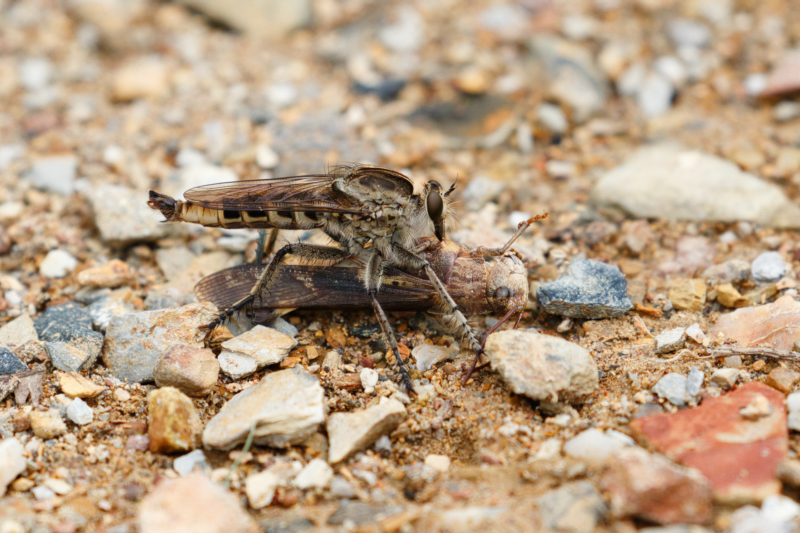While walking a county road near the Ouachita National Forest in Arkansas, I experienced an incredible scene – a robber fly had caught a grasshopper and was feeding right there on the road. As a wildlife photographer, I knew this was a rare opportunity to photograph these predatory flies in action.
I quickly grabbed my camera and sat down on the road to get eye level with the insects. I was able to get some great shots of the robber fly clutching the grasshopper in its spiny legs from different angles, as you can see in the photos included in this post.


The Fascinating World of Robber Flies
Robber flies, also known as assassin flies, are aerial insect predators found all over the world. They get their name from their aggressive hunting techniques, which allow them to overpower and feed on other insects like flies, beetles, butterflies, and as seen here, grasshoppers.
These flies will patiently wait on leaves and stems for potential prey to land nearby. Once targeted, the robber fly uses its powerful flight muscles and legs to ambush and grab the unsuspecting insect. The robber fly then pierces its victim with its sharp, needle-like proboscis and sucks out the prey’s body fluids.
Photographing Robber Flies Up Close
Getting to witness and photograph this type of behavior up close is a dream come true for an insect-loving photographer like myself! While they can look intimidating, robber flies do not pose any threat to humans. I feel lucky to have been in the right place at the right time to capture such fascinating insect behavior.
Are Robber Flies Harmful to Humans?
While they are not dangerous to humans and do not attack us, they can inflict a painful bite if handled roughly. Robber flies practice “extraoral digestion,” which means their bite injects digestive enzymes and a painful venom adapted for their predatory lifestyle. Therefore, it is important to be careful when handling them. However, they do not carry diseases or bite people unprovoked.
